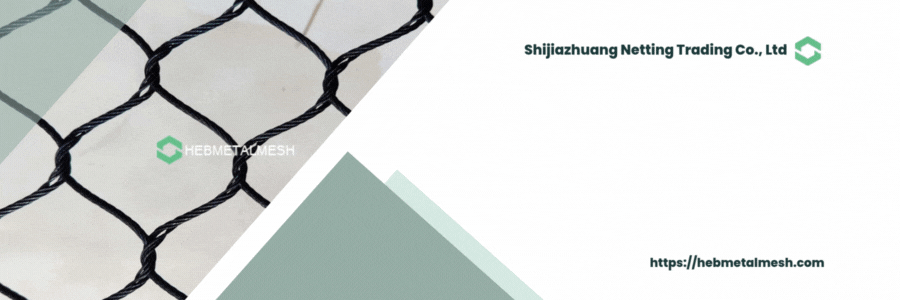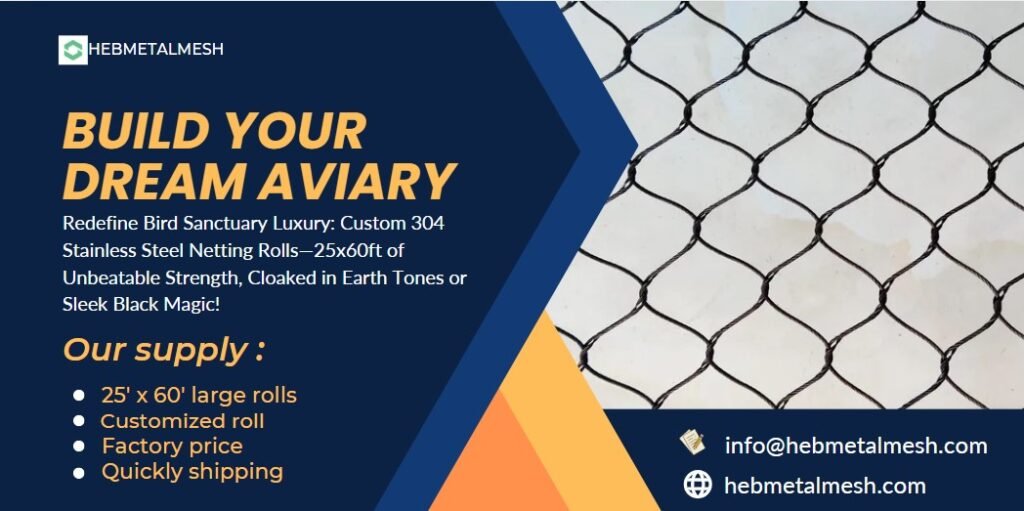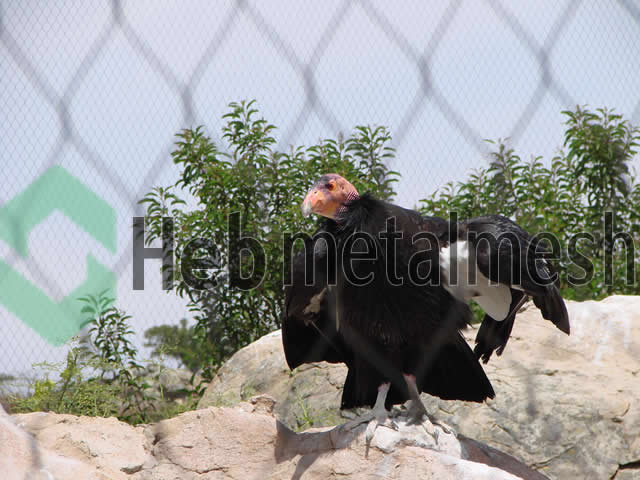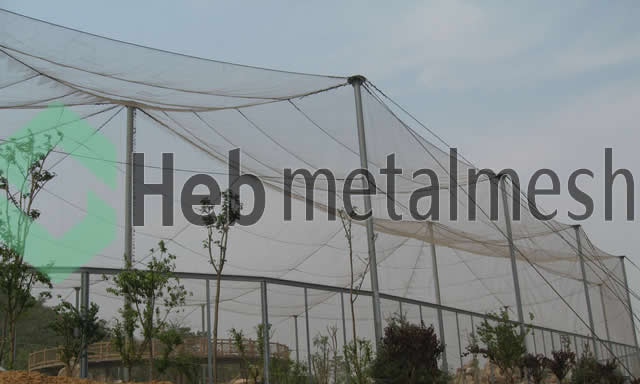Introduction to Aviary Bird Nets
Aviary bird nets are specialized nets designed to create a safe and secure environment for birds in an aviary setting. These nets play a critical role in protecting the birds from potential predators while allowing them to enjoy a naturalistic habitat. The importance of an aviary bird net cannot be understated, as it offers a layer of security that ensures the well-being of both exotic and domestic bird species. By preventing unwanted access from outside threats, these nets enable birds to thrive in a safe space.
In addition to their protective functions, aviary bird nets can significantly enhance the overall aesthetic of an aviary project. A well-designed netting system not only integrates seamlessly with the structure but can also provide an appealing visual component, allowing observers to enjoy the beauty of the birds in a natural setting. The fine mesh of an aviary net provides unobstructed views while maintaining safety protocols, striking a balance between visibility and security.
Among various materials available for aviary bird nets, stainless steel 304 has emerged as the preferred choice for many enthusiasts and professionals. This particular grade of stainless steel is prized for its durability, resistance to corrosion, and strength. These properties make it an excellent option for both indoor and outdoor aviaries, where exposure to weather conditions can often compromise lesser materials. Choosing a stainless steel 304 aviary bird net ensures long-term investment in the safety and aesthetic appeal of the project, making it a suitable choice for anyone looking to create a secure environment for their birds.
Why Choose Stainless Steel 304 for Your Aviary Nets?

When selecting materials for aviary bird nets, stainless steel 304 stands out as a superior option due to its unmatched durability and corrosion resistance. This specific grade of stainless steel is widely recognized for its ability to withstand harsh environmental conditions, making it particularly suited for outdoor use in aviaries. Unlike alternative materials such as aluminum or plastic, stainless steel does not break down under UV exposure or extreme weather changes. This longevity ensures that aviary bird nets made from stainless steel 304 can endure the test of time, significantly reducing the frequency of replacement and maintenance.
One of the most compelling benefits of using stainless steel 304 in aviary nets is its remarkable corrosion resistance. The natural elements, including rain, humidity, and even exposure to bird droppings, can lead to the rapid degradation of lesser materials. Stainless steel 304, on the other hand, is designed to resist oxidation and rust, keeping the net intact and functional for many years. As a result, this material minimizes the long-term costs associated with repairs or replacements, offering excellent value for aviary enthusiasts and professionals alike.
Furthermore, the minimal maintenance requirements of stainless steel 304 are a notable advantage. Unlike other materials that may require regular treatments or special cleaning solutions to maintain their integrity, stainless steel can be easily cleaned and maintained with simple soap and water. This ease of care makes it an attractive option for those managing aviaries, as it allows for a more hands-free approach while ensuring that the bird netting remains safe and effective for the inhabitants. In conclusion, the combination of durability, corrosion resistance, and low maintenance makes stainless steel 304 an optimal choice for aviary bird nets, ensuring they remain functional and aesthetically pleasing throughout their usage.
Color Options: Nature vs. Black Oxide
When considering the appropriate aviary bird net for your project, the color choice plays a significant role not just in aesthetics but also in the overall environment for the birds. The two prominent options that stand out are the nature finish and the black oxide finish. Each option brings its own set of characteristics that cater to different preferences and needs.
The nature finish typically embodies the colors found in natural habitats. These shades often evoke a sense of calmness and belonging for the birds, mimicking the environment they would encounter in the wild. The use of a nature-colored aviary bird net can enhance the visual appeal of the aviary, blending seamlessly into gardens or outdoor environments. This choice creates an inviting space, minimizing stress for the birds and simulating their original surroundings, thereby promoting their well-being.
In contrast, the black oxide finish offers a sleek, modern appearance that may appeal to those looking for a contemporary aesthetic. This finish provides a striking visual contrast against vibrant bird plumage, potentially heightening the effect of the colors displayed by the birds. While this modern look can be advantageous from an architectural standpoint, it may not create the same emotional connection for the birds as the nature finish. Birds may feel less at home in environments that starkly contrast with their natural habitats.
Ultimately, the choice between nature and black oxide finishes for aviary bird nets should consider both the visual impact and the emotional landscape for the birds. While the nature finish fosters a harmonious connection with the environment, black oxide introduce a distinct modern flair. The best decision will depend on balancing aesthetic preferences with the well-being of the aviary’s inhabitants.
Understanding Roll Sizes: 30′ x 60′ and Custom Options
When embarking on an aviary project, selecting the appropriate aviary bird net roll size is paramount. The standard roll size available in the market is 30′ x 60′, which provides ample dimensions for a variety of aviary designs. This size is especially practical for larger structures where multiple birds or species are to be housed. The expansive area covered by these dimensions allows for flexibility in design, ensuring that birds have sufficient space to fly and engage in natural behaviors while remaining protected within the netting. Furthermore, the 30′ x 60′ size facilitates ease of installation, as it can be managed by a small team, effectively reducing labor time and ensuring that the netting is properly secured.
In addition to standard roll sizes, custom options are available for aviary bird nets, accommodating unique requirements that may arise in specific projects. Custom sizing allows for more tailored solutions, particularly in cases where space is restricted or when covering unconventional shapes. By offering roll sizes that cater to individual specifications, the possibility of significant waste is minimized, leading to a more sustainable approach in obtaining materials. This is particularly beneficial for builders or owners looking to optimize their spending while still ensuring a high level of safety and comfort for their birds.
When choosing the right size for your aviary layout, it is essential to assess both the dimensions of the available space and the specific needs of the bird species to be housed. Factors to consider include the height and width requirements necessary for flight and perching, as well as the installation environment. By carefully evaluating these aspects, aviary enthusiasts can make informed decisions, ensuring that the chosen aviary bird net complements both their space and the needs of their feathered inhabitants.
Key Features to Look For in an Aviary Bird Net
When selecting the appropriate aviary bird net, several key features should be taken into consideration to ensure the safety and well-being of the birds housed within. Understanding these features can significantly impact the effectiveness and longevity of your aviary setup.
First and foremost, mesh size plays a critical role in determining which birds can be safely housed within the aviary. Opting for a net with an appropriate mesh size is essential, as it prevents small birds from escaping while also protecting them from potential predators. A smaller mesh size is particularly beneficial for smaller species, while larger birds may require a more robust net that still maintains adequate protection.
Tensile strength is another significant feature to consider. An aviary bird net constructed from high-quality materials, such as stainless steel 304, will offer superior tensile strength, ensuring that it can withstand various environmental stressors. This feature not only contributes to the longevity of the netting but also maintains the structural integrity of the aviary, safeguarding the birds inside from potential breaches.
UV resistance is crucial for outdoor aviaries, as persistent exposure to sunlight can degrade conventional netting materials over time. Selecting a UV-resistant aviary bird net will prolong its lifespan, minimizing the need for frequent replacements. This feature also helps maintain a safe and comfortable environment for the birds by preventing potential overheating within the enclosure.
Finally, ease of installation should not be overlooked. A user-friendly aviary bird net allows for straightforward application, ensuring that even those who may not be adept at DIY projects can successfully set up their aviary. Taking these features into account enables potential buyers to make informed decisions that ultimately enhance the safety and functionality of their aviary projects.
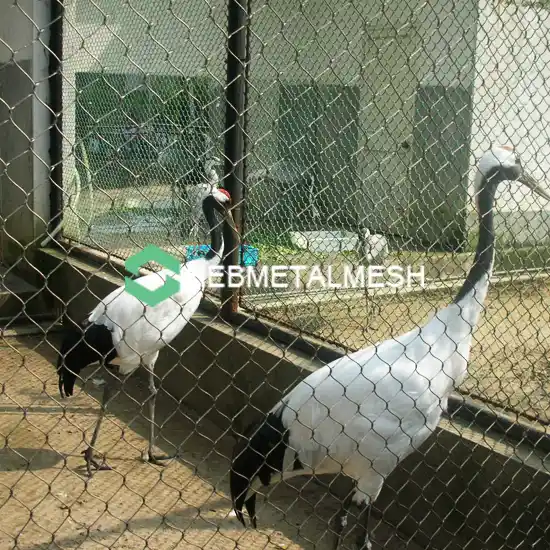
Installation Tips for Your Aviary Bird Net
When it comes to installing an aviary bird net, careful planning and execution are key to ensuring the safety and comfort of your feathered friends. To begin, gather all necessary tools and materials: you will need measuring tape, a sturdy ladder, nylon or stainless steel anchors, hooks, a utility knife, and of course, your chosen aviary bird net. It’s advisable to have a helper during the installation process, as an extra set of hands can significantly streamline the effort.
Start by measuring the area where you plan to install the net. Be sure to account for any structures or trees that may hinder proper coverage. A well-measured space ensures that the net is appropriately stretched without sagging, thereby enhancing both aesthetics and functionality. Next, secure the anchors in place at the corners and edges of the designated area using a drill. This will provide a strong base for your aviary bird net, reducing the risk of it inadvertently pulling loose during inclement weather or from animals attempting to breach the enclosure.
Once your anchors are in place, carefully unfold the aviary bird net across the designated area. Align its edges with the secured anchors to prevent any gaps. When attaching the net to the anchors, use the hooks and ensure that the net is taut. This step is crucial as a loose net may invite unwanted intruders or fail to prevent escape. As you work, periodically check for any potential hazards like sharp edges or exposed anchors. Lastly, trim any excess netting with a utility knife to achieve a clean finish. Always double-check your installation for stability and integrity before introducing birds into the new enclosure.
With patience and attention to detail, your aviary space will be transformed, providing a secure environment for your avian pets to thrive. Installing an aviary bird net may seem daunting at first, but with these tips you can approach the project with confidence and excitement.
Maintenance: Keeping Your Aviary Bird Net in Top Condition
Proper maintenance of your aviary bird net, particularly those made from stainless steel 304, is essential to ensure longevity and optimal performance. A well-maintained bird net not only enhances the safety of your birds but also preserves the aesthetics of your aviary. Regular care should include cleaning, inspection, and repair, and each of these aspects plays a crucial role in maintaining your aviary bird net’s functionality.
Cleaning your aviary bird net should be a priority, as debris such as leaves, dust, and bird droppings can accumulate over time. It is advisable to clean the net at least once a month. Use a gentle solution of mild soap and water to remove any organic matter without damaging the material. A soft-bristled brush can assist in reaching into the mesh’s crevices while avoiding harsh chemicals that can corrode stainless steel. Rinse thoroughly with clean water to ensure no residue remains, which could lead to deterioration.
In addition to cleaning, regular inspection of the aviary bird net is essential. Look for signs of wear and tear, including frayed edges, rust spots or any weakening of the mesh itself. Pay special attention to the connection points where the net is secured inside the aviary, as these areas are susceptible to stress and potential failure. Inspecting these zones at least twice a year will help catch issues early, allowing for timely repairs.
Should you discover any damage during your inspection, prompt action is required. Minor tears in the netting can sometimes be repaired with specialized patches designed for stainless steel mesh. However, if the damage is extensive, it may be more prudent to consider replacing the entire aviary bird net to ensure your birds are adequately protected.
Cost Considerations: Is it Worth the Investment?
When assessing the financial implications of acquiring an aviary bird net, it is essential to consider both the upfront costs and the long-term benefits associated with high-quality materials, particularly stainless steel 304. While cheaper alternatives may initially appeal to budget-conscious individuals, investing in a robust aviary bird net made from stainless steel can significantly enhance the longevity and safety of your avian enclosure.
Stainless steel 304 is known for its superior resistance to corrosion and rust, making it a highly durable option for aviary bird nets. This material can withstand harsh environmental conditions, ensuring that the aviary retains its integrity over many years. Cheaper bird nets, often made from less durable materials, may require frequent replacement, driving up overall costs. Therefore, by selecting a quality stainless steel aviary net, one might spend more upfront but ultimately save on future replacements and maintenance.
Moreover, the safety benefits associated with sturdy aviary bird nets cannot be overlooked. A well-designed and strong net safeguards birds from predators and prevents escapes, thus preserving the well-being of your cherished avian pets. This aspect is particularly crucial for breeding birds, where a safe environment directly impacts the success of raising healthy, thriving chicks.
In addition to safety and durability, consider the potential cost reductions in insurance or liability coverage. A secure aviary minimizes risks, which can translate into lower premiums. These factors contribute to a compelling case for choosing a premium aviary bird net over less expensive options. In summary, while the initial investment in quality materials may seem significant, the long-term savings, coupled with enhanced safety and peace of mind, make it a worthwhile consideration for any serious aviary project.
FAQs About Stainless Steel Aviary Bird Netting: Durability, Safety, and Installation
A stainless steel aviary bird net is a robust, corrosion-resistant mesh designed to securely enclose bird habitats while protecting them from predators and escapes. It’s ideal for outdoor use due to its UV resistance, weatherproof properties, and ability to withstand harsh climates. Searches like “weatherproof stainless steel bird aviary netting” or “rust-resistant outdoor bird enclosure nets” often highlight its suitability for gardens, zoos, and commercial aviaries, ensuring long-term protection without degradation.
1. What is a Stainless Steel Aviary Bird Net, and Why is it Ideal for Outdoor Enclosures? A stainless steel aviary bird net is a robust, corrosion-resistant mesh designed to securely enclose bird habitats while protecting them from predators and escapes. It’s ideal for outdoor use due to its UV resistance, weatherproof properties, and ability to withstand harsh climates. Searches like “weatherproof stainless steel bird aviary netting” or “rust-resistant outdoor bird enclosure nets” often highlight its suitability for gardens, zoos, and commercial aviaries, ensuring long-term protection without degradation.
2. How Does Stainless Steel Aviary Netting Ensure Safety for Birds Like Parrots or Finches?
Yes! Many suppliers offer custom-sized stainless steel aviary nets tailored to specific dimensions, whether for DIY home setups or large-scale zoos. Keywords like “custom-cut stainless steel bird aviary mesh” or “heavy-duty modular aviary panels” reflect this demand. Customization ensures seamless coverage for irregularly shaped enclosures, balconies, or rooftop aviaries while maintaining structural integrity.
Installation involves securing the net to frames using stainless steel clamps, hooks, or tension wires. DIY guides for “how to install stainless steel aviary netting at home” recommend measuring the space, anchoring the mesh tightly to avoid sagging, and trimming excess material. For complex projects like “commercial aviary installations,” professional help ensures compliance with safety standards and load-bearing requirements.
While initially pricier than nylon or galvanized steel, stainless steel nets save money long-term due to minimal maintenance and a lifespan of 15–20+ years. Searches like “low-maintenance stainless steel bird enclosure nets” or “durable aviary netting for harsh climates” emphasize its value. It resists corrosion, UV damage, and wear, eliminating frequent replacements and ensuring birds remain secure year-round.
Conclusion
In summary, selecting the right aviary bird net is a crucial aspect of creating a safe and aesthetically pleasing environment for your birds. Throughout this guide, we have explored the myriad benefits of using a stainless steel 304 aviary bird net, emphasizing its durability, resistance to corrosion, and long-term cost-effectiveness. These nets not only ensure the security of your birds but also enhance the overall visual appeal of your aviary, making it a synergistic addition to any outdoor or indoor space.
We have also shed light on the importance of considering different sizes and mesh types, allowing for adequate airflow while keeping your feathered companions safe from external threats. Understanding the various options available ensures that you make an informed decision tailored to your specific needs and the species of birds you are housing. The insights gathered here should guide you in choosing a net that does not compromise either on functionality or the beauty of your aviary.
As you embark on your aviary project, remember that investing in a quality aviary bird net can also reflect your commitment to the health and well-being of your birds. Consider the practicalities discussed herein, and allow them to inspire you to elevate your project. By implementing the right choices now, you will undoubtedly create a space that not only offers safety but also fosters a nurturing home for your avian friends. Take action today by selecting the ideal stainless steel 304 net for your aviary, and embark on this rewarding journey with confidence and care.
